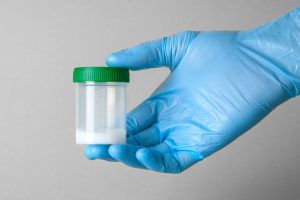Using the model organism Caenorhabditis elegans, biologists have identified molecular mechanisms that cause DNA damage in sperm and contribute to male infertility after exposure to heat. In humans, the optimal temperature for sperm production is just below body temperature, in a range of about 32 to 35 degrees Celsius. Studies in humans have shown that temperatures just 1 degree Celsius above this normal range impair male fertility.
How Heat Affects Sperm
The phenomenon of heat-induced male infertility is well known, and the effects of modern heat exposure such as hot tubs, tight clothing, and excessive driving have been extensively studied. However, the underlying mechanisms that damage sperm and impair fertilization are not yet fully understood. In both humans and C. elegans, relatively small increases in temperature are sufficient to reduce male fertility.

An increase of 2°C (3.6°F) above normal in C. elegans, a species of roundworm, resulted in a 25-fold increase in DNA damage in developing sperm compared to unexposed sperm. Eggs fertilized by these damaged sperm were unable to produce offspring.
Higher DNA Damage in Sperm Cells
Sperm, the smallest cells in the human body, form in their billions at temperatures below body temperature and are produced throughout adult life. Egg cells, the largest cells in the human body, are formed internally, where the temperature is constant, and are only produced during a limited period of fetal development. Research conducted at the University of Oregon suggests, among other things, that egg cells and sperm differ in how strictly they control the mobility of mobile DNA elements, also known as “jumping genes” or transposons, in the genome, and how sensitive these mechanisms are to heat stress in order to prevent this movement.
Transposons are segments of DNA that move and alter genetic information by inserting themselves into new positions. In doing so, they leave behind DNA damage. The movement of these “jumping genes” is normally suppressed in developing sperm and egg cells. However, the study has shown that transposons migrate specifically in developing sperm when exposed to heat. The research team used microscopy to observe the development of sperm and egg cells under normal conditions and under heat stress.
Under heat stress, the researchers found higher DNA damage in the sperm, but not in the egg cells. Using next-generation genome sequencing, they also identified the positions of the transposons throughout the genome with and without heat exposure. According to the researchers, the study not only shows that a slight increase in temperature affects meiosis, but also identifies a mechanism—not only where the error occurs, but also what the error is.




